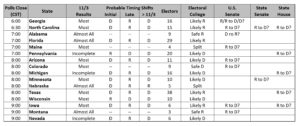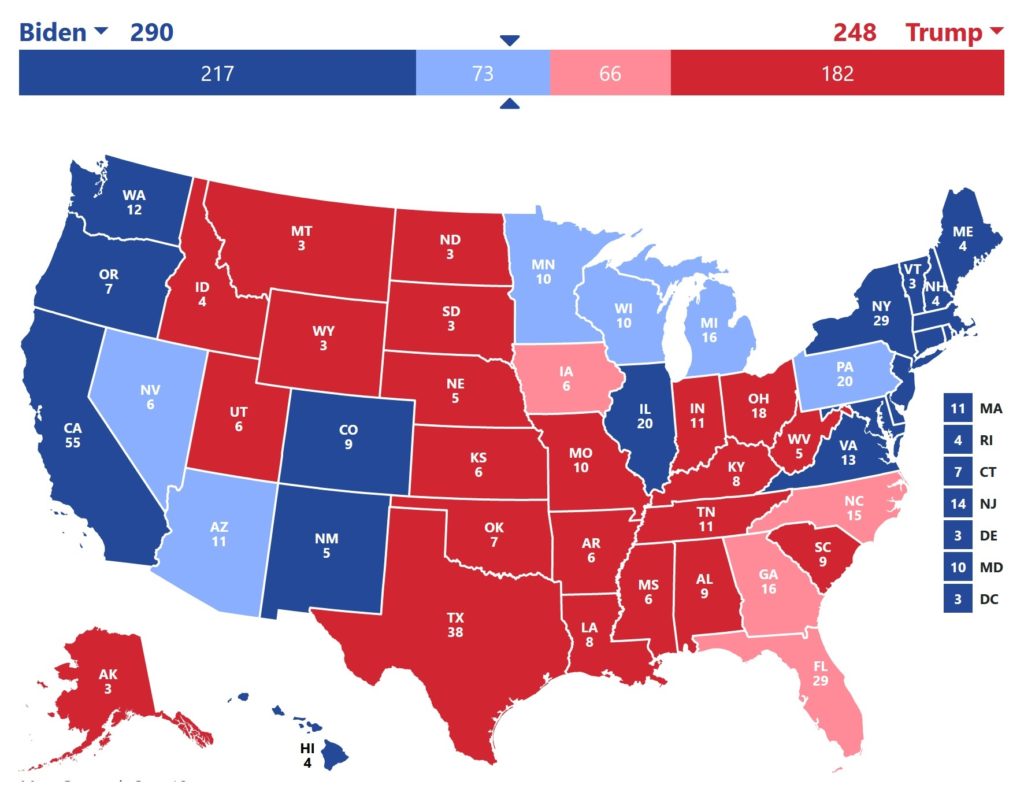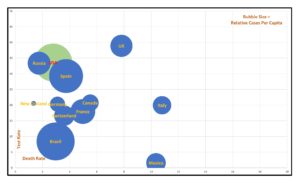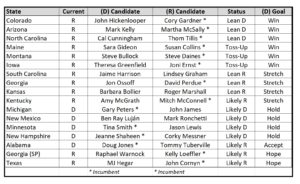I composed a post in the wee hours of 11/4. It was an incoherent mess of incredulous, pissed off, and suicidal. It was not my best work. I’m thankful that some internal voice quietly suggested that I delay publication. That draft has since been deleted.
I made the decision to not try again until there was a bit more certainty. Like Toby Ziegler, I had no desire to “tempt the wrath of whatever from high atop the thing” by making hasty assumptions about final outcomes. I’m still processing all that has transpired and I remain quite anxious to see how things will progress from here. Trump will not go gentle into that good night.
I’ll have more to say at a later date. For now, I’ll simply share some big picture thoughts in the form of an early review of my own predictions.
Presidential Election
Earlier this year, as I tweaked my own predictive model of the 2020 Electoral College, I made a conscious choice to underweight polling. In our current world, I was unconvinced that any pollster could correctly define a “likely voter” upon which to base a valid sample. I thus over-weighted state-level data on voting histories, party control, demographics, the 2016 & 2018 elections, etc. In the end, my final predictions were pretty close. Georgia currently appears to be the only state that will be an outlier from my model – and that vote count will be ridiculously close.
I also accurately predicted the timing shifts for the vote counts in some swing states – although the amplitude of the initial R shifts surprised me to the point of panic. Luckily, at least some of them were later offset by D waves of equal or greater intensity.
All that said, I simply cannot bring myself to excessively celebrate my model’s decent accuracy. Indeed, none of my analytical efforts prevented me from secretly harboring a desire that my model would be proven wildly wrong. I found myself hoping – with zero data to back it up – that America would send a resounding message that, even in our polarized political world, there were clear limits to what we would tolerate from a President of the United States. While I’m certainly thankful that the message appears to have been delivered, it was hardly in the full voice that I expected from my country. I’ll need some time to ponder that.
U.S. Senate
My Senate model – again with polling averages under-weighted – was also fairly accurate. The outliers skewed to Republicans.
- While I’d noted that Cunningham’s extramarital affair could hurt him, I didn’t alter my model to take it into account. My bad. Frankly, if I lived in North Carolina, I couldn’t have voted for him, either.
- I was wrong about Collins in Maine. I did not see an easy path to her re-election – particularly given Maine’s ranked choice voting. However, Collins won by an impressive margin. For curiosity’s sake, I might dig into the numbers at some point to see where my model went awry.
Both Georgia Senate seats appear headed to a run-off and, if Democrats can somehow pull off two wins, the resultant 50/50 split would give Democrats control of the chamber. I’ll take a closer look at these races later but, for now, I’m not holding my breath.
U.S. House
The R wave in the House caught me completely by surprise. Here, I was mostly lazy. I failed to do the district-by-district research that I did for the competitive 2018 races and I casually assumed that polling averages at the district level would be more accurate than their broader cousins. In retrospect, that was a rotten assumption on many levels. Apparently, Pelosi and the rest of the Democratic leadership in the House were similarly lazy. There’s just one difference: IT WASN’T MY JOB.
I don’t know yet if the problem was bad messaging, flawed candidates, lack of focus, or some combination of the above. However, it’s already obvious that leadership tried too hard to expand their majority at the expense of defending the one they had. With a more-than-sufficient pile of cash and a winner at the top of the ticket, losing that many House seats is inexcusable.
Texas State House
I knew it was a very long shot for Democrats to fill the double inside straight necessary to win this chamber. However, I also didn’t expect them to just fold. Democrats won zero of the seats they targeted. Ouch.
Other State Legislative Chambers
I didn’t weigh in here except to note the seven chambers that were in play. Democrats failed to flip a single one. Long term, this is probably the most important result of the election. Republicans will be able to gerrymander the crap out of multiple states (Texas included) to guarantee their party a decade-long advantage at both the state level and in the U.S. House. Ouch again.
Coda
Democrats do appear to have prevented another four years of a Trump administration. That is a very good thing and is worthy of some celebration. Overall, however, Democrats got their butts handed to them. They just haven’t fully realized it yet.
Republicans, on the other hand, had a really, really good election. They just won’t see it that way.
2020.




